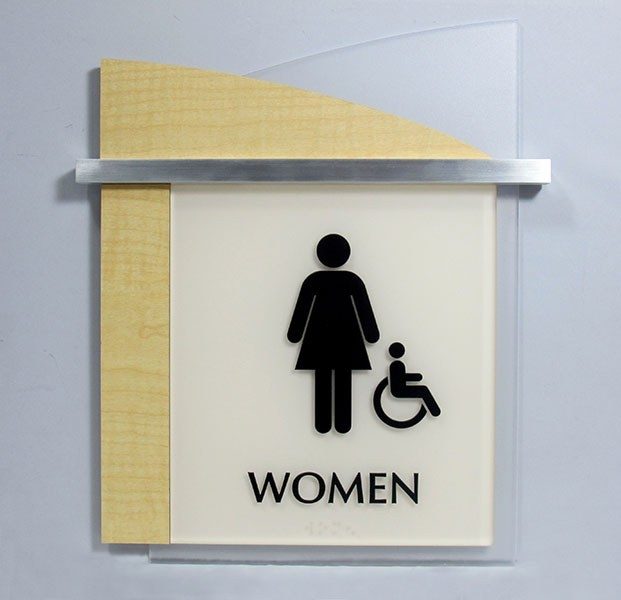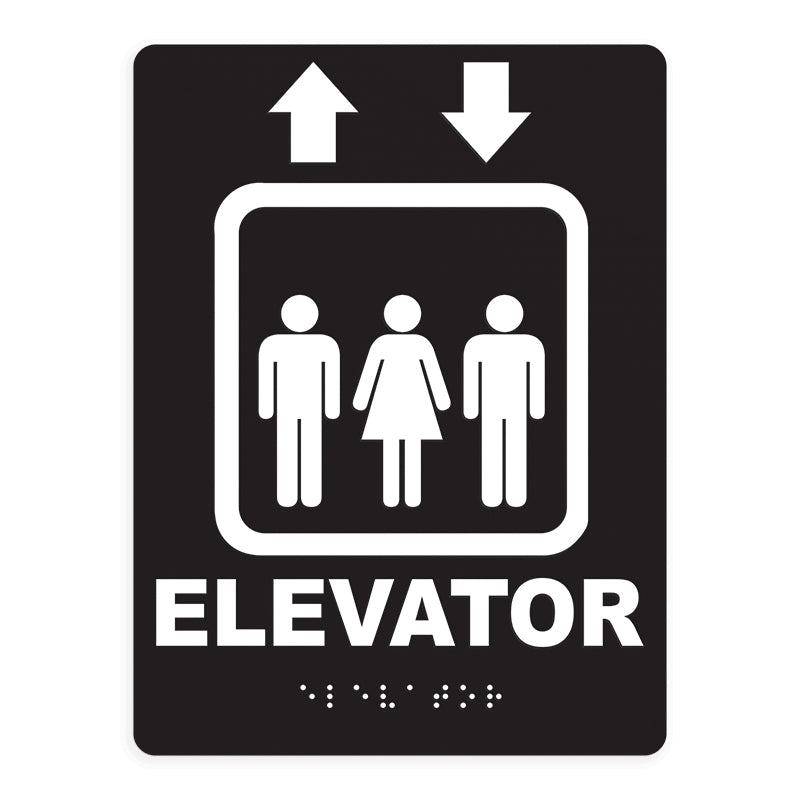A Comprehensive Guide to Choosing the Right ADA Signs
A Comprehensive Guide to Choosing the Right ADA Signs
Blog Article
Discovering the Trick Attributes of ADA Indications for Enhanced Accessibility
In the world of availability, ADA indicators function as silent yet effective allies, guaranteeing that rooms are navigable and inclusive for people with disabilities. By incorporating Braille and responsive components, these indicators break obstacles for the visually damaged, while high-contrast color systems and clear fonts satisfy diverse visual requirements. Additionally, their calculated positioning is not arbitrary yet rather a calculated effort to help with seamless navigation. Yet, beyond these functions exists a much deeper narrative about the development of inclusivity and the continuous commitment to creating equitable spaces. What a lot more could these signs represent in our pursuit of universal ease of access?
Significance of ADA Conformity
Ensuring conformity with the Americans with Disabilities Act (ADA) is crucial for promoting inclusivity and equal accessibility in public spaces and work environments. The ADA, established in 1990, mandates that all public facilities, companies, and transport solutions accommodate individuals with impairments, guaranteeing they enjoy the exact same rights and possibilities as others. Compliance with ADA criteria not just meets lawful obligations but additionally enhances an organization's credibility by showing its dedication to diversity and inclusivity.
One of the key elements of ADA compliance is the application of obtainable signage. ADA indicators are developed to ensure that individuals with impairments can quickly navigate via buildings and areas. These indications must comply with specific standards concerning size, font style, color contrast, and positioning to ensure presence and readability for all. Appropriately executed ADA signage aids remove barriers that people with impairments frequently encounter, therefore advertising their freedom and self-confidence (ADA Signs).
In addition, sticking to ADA regulations can reduce the danger of legal repercussions and prospective penalties. Organizations that fail to adhere to ADA standards might face penalties or suits, which can be both destructive and economically challenging to their public picture. Hence, ADA conformity is essential to cultivating a fair environment for everyone.
Braille and Tactile Aspects
The consolidation of Braille and tactile elements into ADA signage symbolizes the concepts of access and inclusivity. It is typically positioned under the corresponding message on signs to guarantee that individuals can access the details without visual assistance.
Tactile components extend beyond Braille and consist of raised personalities and symbols. These components are made to be discernible by touch, enabling people to identify room numbers, bathrooms, exits, and other important locations. The ADA establishes particular standards relating to the dimension, spacing, and positioning of these tactile components to optimize readability and ensure consistency throughout various atmospheres.

High-Contrast Color Pattern
High-contrast color schemes play a critical function in improving the visibility and readability of ADA signs for individuals with visual disabilities. These schemes are essential as they maximize the difference in light reflectance in between message and history, making sure that indicators are conveniently discernible, also from a distance. The Americans with Disabilities Act (ADA) mandates the use of certain shade contrasts to fit those with restricted vision, making it an essential facet of conformity.
The efficacy of high-contrast shades hinges on their capability to attract attention in various lighting problems, including dimly lit settings and areas with glare. Normally, dark text on a light history or light message on a dark background is employed to accomplish ideal contrast. For example, black text on a white or yellow background supplies a stark visual distinction that aids in fast acknowledgment and comprehension.

Legible Fonts and Text Size
When thinking about the layout of ADA signs, the selection of understandable typefaces and suitable text dimension can not be overemphasized. These elements are important for guaranteeing that indicators come to people with visual problems. The Americans with Disabilities Act (ADA) mandates that typefaces have to be not italic and sans-serif, oblique, manuscript, extremely decorative, or of unusual type. These requirements assist guarantee that the text is easily readable from a distance which the personalities are distinguishable to varied target markets.
The dimension of the text likewise plays a pivotal duty in accessibility. According to ADA standards, the minimal message elevation should be 5/8 inch, and it should enhance proportionally with seeing distance. This is especially essential in public areas where signage demands to be reviewed promptly and precisely. Consistency in message dimension adds to a natural visual experience, assisting people in navigating atmospheres effectively.
In addition, spacing between letters and lines is essential to readability. Adequate spacing protects against characters from showing up crowded, improving readability. By sticking to these criteria, developers can substantially improve accessibility, ensuring that signs serves its desired advice function for all individuals, no matter of their aesthetic abilities.
Effective Positioning Methods
Strategic positioning of ADA signs is vital for taking full advantage of accessibility and ensuring compliance with lawful standards. Appropriately positioned indicators guide individuals with specials needs successfully, facilitating navigating in public areas. Key considerations include closeness, height, and exposure. ADA standards stipulate that signs should be placed at a height between 48 to 60 inches from the ground to ensure they are within the line of view for both standing and seated people. This basic height variety is crucial for inclusivity, enabling mobility device customers and people of varying elevations to accessibility information effortlessly.
Additionally, signs must be put adjacent to the latch side of doors to enable simple identification before access. Consistency in indication placement throughout a center boosts predictability, minimizing confusion and enhancing overall individual experience.

Final Thought
ADA my review here indicators play a crucial duty in promoting access by incorporating attributes that address the needs of individuals with disabilities. These elements jointly promote an inclusive atmosphere, highlighting the importance of ADA compliance in making certain equivalent access for all.
In the realm of ease of access, ADA indicators Read Full Report serve as silent yet effective allies, ensuring that spaces are navigable and inclusive for individuals with specials needs. The ADA, established in 1990, mandates that all public centers, employers, and transportation services fit individuals with handicaps, ensuring they appreciate the very same rights and opportunities as others. ADA Signs. ADA indicators are made to guarantee that individuals with handicaps can easily browse with structures and spaces. ADA guidelines specify that signs should be installed at a height between 48 to 60 inches from the ground to ensure they are within the line of sight for both standing and seated people.ADA indicators play an essential duty in promoting accessibility by incorporating features that deal with the requirements of people with handicaps
Report this page